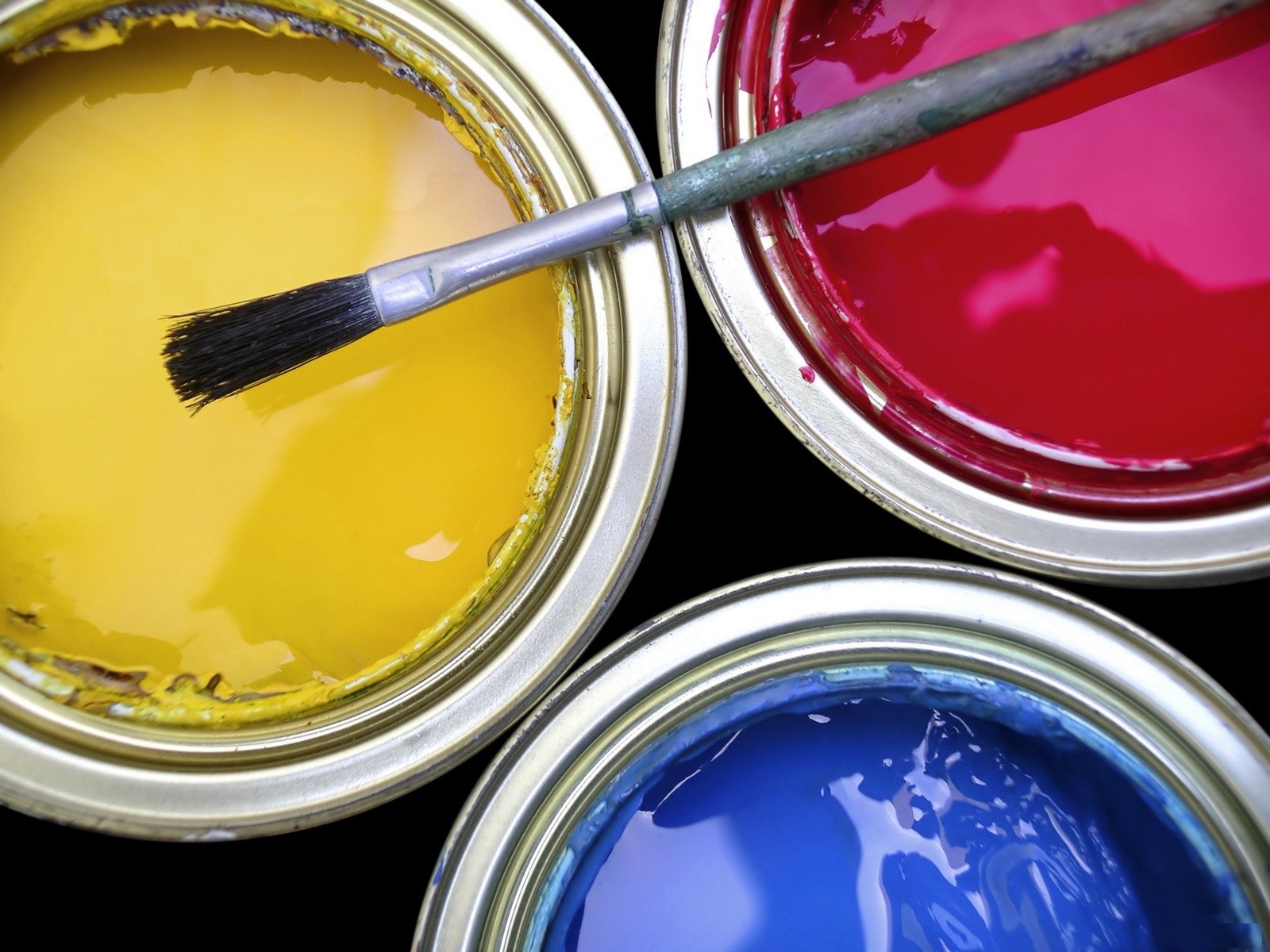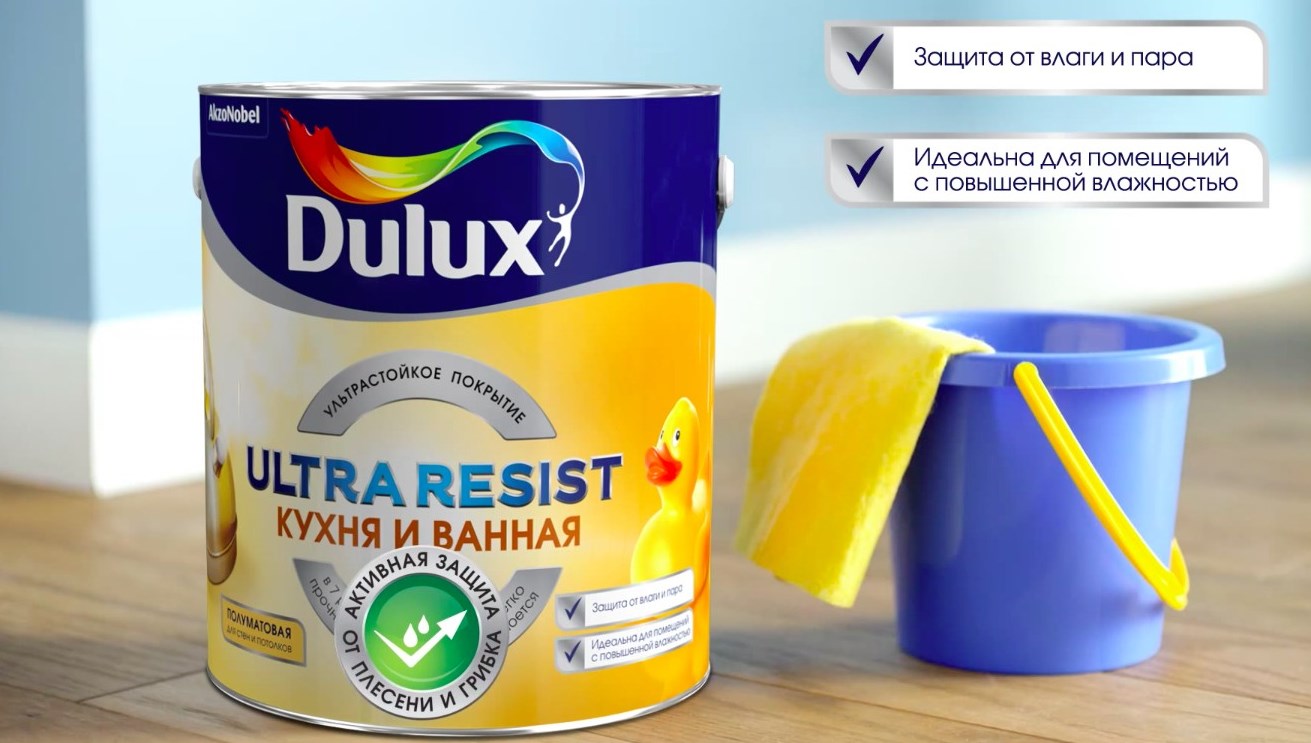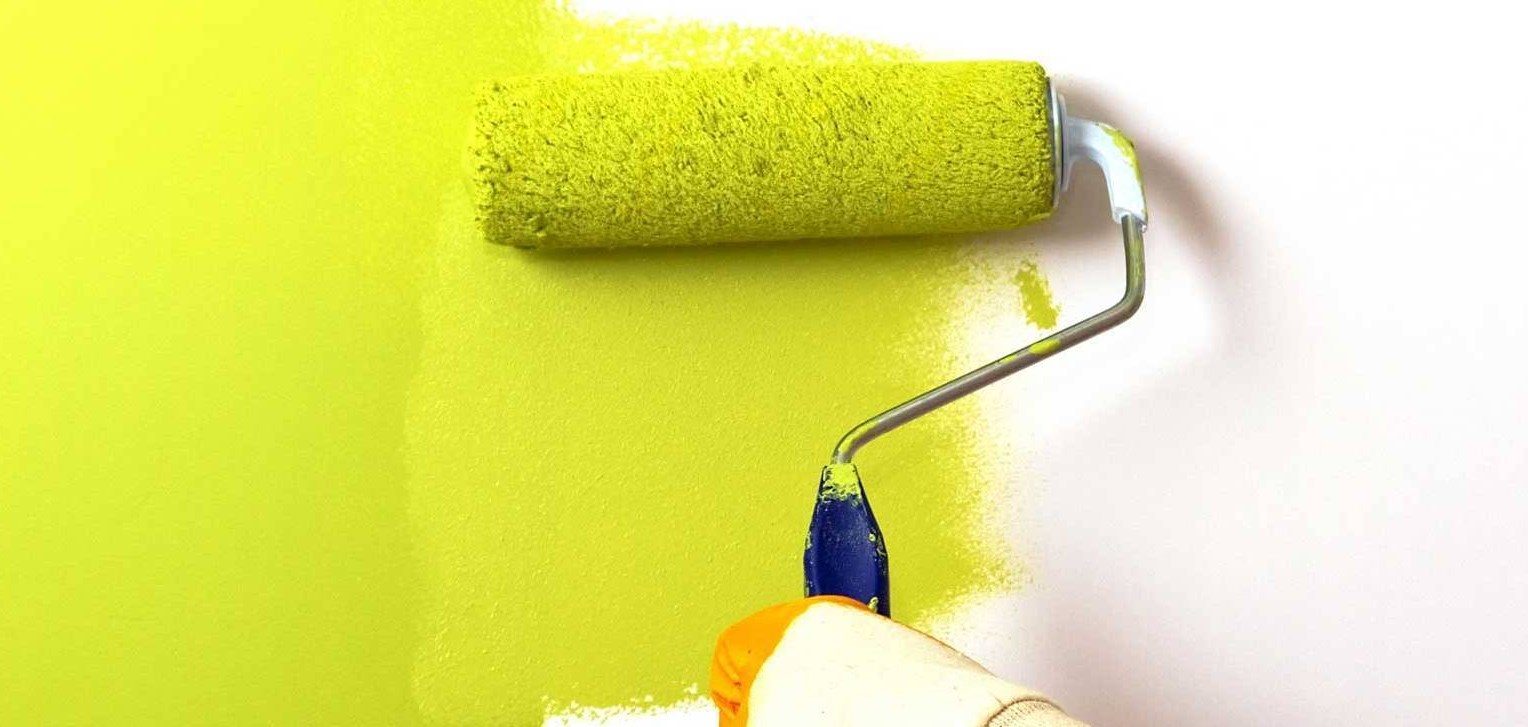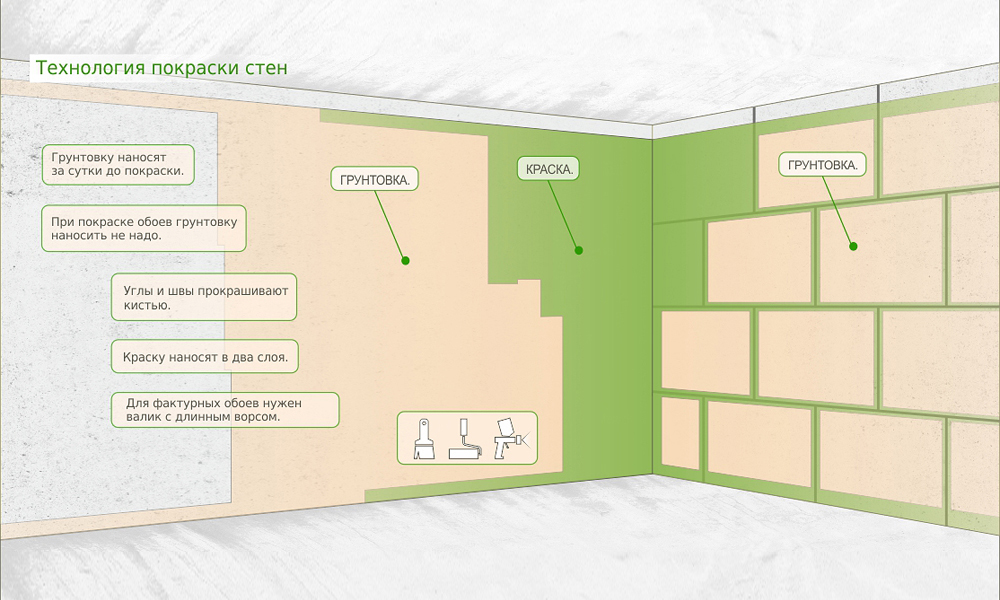How to prepare and paint a bathroom
Bathroom design can be created using various finishing materials, which must meet certain characteristics. The finish must be moisture resistant, resistant to large temperature changes, and also resist aggressive chemicals. The most popular design today is associated with mosaics, tiles, which, along with plastic, are considered the most moisture-resistant finishing material. A significant disadvantage of this finish is the rather high cost of ceramic cladding and the complexity of the work.
You can solve this problem if you paint the bathroom correctly. This approach will save you a lot. In addition, all work can be easily done with your own hands, since painting the walls in the bathroom does not require special qualifications of the performer, but only compliance with certain rules during work.
Advantages and disadvantages of painting rooms with high humidity
Painting the walls in the bathroom in a modern interior does not only speak unambiguously about the desire to save money, but also provides new opportunities for creating an original design. Interior applications, drawings, interior graffiti can be used to give an attractive originality to such premises.
- The main advantages of using paints are as follows:
- Paints and varnishes have a fairly affordable price compared to other cladding. This will significantly save on the implementation of design projects of any complexity.
- A simple application technology does not require special skills and abilities, so an ordinary person can paint the walls in the bathroom with his own hands.
- With a properly prepared surface, such work does not take much time.
- The variety of colors allows you to bring to life the most daring creative ideas using unique images.
- Qualitatively applied paint provides insulation from moisture, as well as ease of care for the walls.
Disadvantages of painted surfaces of sanitary facilities:
- The final layer of paint can be damaged by mechanical stress. At the same time, moisture accumulates in the voids formed, destroying the decorative coating more and more.
- Small rooms with poor ventilation are not suitable for painting, as condensation accumulates intensively inside them.
- After each bath or shower, it is important to wipe the painted walls, and this leads to certain inconveniences.
- Correctly painting a bathroom is possible only if there are ideal base surfaces. This is achieved by high-quality putty and grouting of the finishing layer.
- The service life of painted bathroom surfaces is significantly lower than the service life of ceramic tiles.
Types of paints for finishing work inside "wet" rooms
To date, painting the walls in the bathroom can be carried out with various materials that differ from each other in terms of base, texture, manufacturer, price.

According to the type of base, the following paints can be distinguished:
- Oil. They are based on drying oil, in which additional pigments dissolve. Thanks to these components, such painted surfaces can last for a long time without losing their aesthetic appeal. To date, there are a large number of paints and varnishes that are superior to oil ones in terms of drying speed, as well as in a number of other parameters. The undeniable advantage of such compositions is that when they are used, significant savings can be made.
- Water. Water-soluble suspensions are characterized by good resistance to moisture, as well as to ultraviolet radiation. They dry quickly, allowing the walls to "breathe". These paints are easy to apply on any surface with your own hands, a large selection of colors allow you to bring any design to life. To date, water-dispersion solutions have become very popular, which are safe for human health.
- Alkyd. They attract with their low cost, as well as practicality. They dry quickly, forming a thin, even layer without smudges. A wide palette of attractive shades gives room for design creativity. The disadvantages of such materials include their toxicity and flammability.
- Acrylic. Consist of water, marble chips, acrylic polymer impurities, titanium dioxide. Such paints can be used to paint brick, concrete walls, as well as gypsum board surfaces. They create a vapor-tight film that protects bathroom surfaces from moisture, mold, fungus. The ability to repaint an already painted white surface in different colors helps to create a unique design.
- silicate. They contain various fillers in their composition: hardeners, pigments, liquid glass. Such paints are characterized by increased resistance to moisture, temperature extremes, as well as direct exposure to ultraviolet radiation. Apply to almost any surface.
- Silicone. We have collected the best qualities of acrylic and latex paints, so they are distinguished by dirt-repellent properties. They consist mostly of special silicone resins. Such colorful compositions tightly seal cracks in the walls, which creates a high-quality coating that does not require special care.
- Latex. These paints are resistant to various detergents. They are waterproof, impervious to air, harmless to human health. Suitable for covering almost any surface. At the same time, matte colors can hide even small wall defects. The disadvantage is the high cost of these materials.
Popular bathroom paint brands
To date, the market for painting materials is represented by well-known manufacturers, among which the following most popular mixtures can be distinguished:
- Tikkurila. A well-known Finnish company presents a specially created brand for "wet" rooms Luja. It has a matte and glossy version, as well as a water-repellent primer.
- dulux. They have proven themselves over the course of half a century of operation. The specially developed brand "Realife Kitchen & Bathroom" is distinguished by good adhesion, increased resistance to moisture.
- Jobi. The perfect combination of affordable prices and German quality. For difficult wet conditions of damp rooms, the WaschFest brand has been developed.

How to choose the right colors for painting
When choosing paint shades for bathroom walls, you must rely on certain criteria:
- In small sanitary facilities, it is better to use light colors, since this achieves a visual effect of increasing the internal space. In such bathrooms, it is recommended to combine paint with tiles, plastic panels.
- Inside the space of large rooms, you can experiment with rich colors.
- Glossy paint with its brilliance and saturation will decorate modern interior design, but it is recommended to use this type of material only on perfectly flat wall surfaces.
- Matte paints and varnishes are very versatile, since their use hides some imperfections and defects in the bases.
Necessary tools for painting work
To paint with your own hands, you will need certain tools:
- Roller with a telescopic handle, the length of which can be adjusted. Ideal when working on a large area, evenly and economically distributing the paint over the surface. It can be textured, fur, foam rubber. It cannot be used to paint hard-to-reach places.
- Paint brush. It is not as economical as a roller, but it allows you to paint joints, small details, surface boundaries with high quality.
- An aerosol spray can with paint allows you to facilitate and speed up the process of painting. With it, you can easily and efficiently paint the ceiling in the bathroom.
- Masking tape, fine-grained sandpaper, rag, personal protective equipment.

Preparatory work before painting the walls
The substrate to be painted must be perfectly level. To achieve this, it is necessary to carry out sequential work:
- First you need to remove the old lining, using coarse sandpaper, a grinder, a spatula.
- After that, it is important to wash the surface with warm water.
- Align, putty the walls, eliminating the cracks, as well as all the irregularities. In this case, it is recommended to use a moisture-resistant acrylic putty.
- The next step is to sand the surface with fine-grained sandpaper.
- Before painting, it is recommended to cover all surfaces with a primer in several layers.

Painting surfaces inside "damp" rooms
Before starting work, it is important to carefully choose a design with the help of photos in numerous catalogs, since these works are carried out with the expectation of a long service life.
The answer to the question "How to paint the walls in the bathroom?" it can be as simple as following the step-by-step instructions:
- Before starting work, it is better to ventilate the room well to get rid of excess moisture. These measures will significantly speed up the drying process of the applied paint.
- It is necessary to prepare the paint immediately before using it.
- If the design of the bathroom involves complex patterns, patterns or different colors and shades, you need to apply the necessary stencils or masking tape.
- The paint is applied to the surface in three layers. This work is a kind of creative process, therefore, it requires accuracy, as well as attention. This is especially true when performing a complex pattern. When using a roller and brush, it is important to apply the paint evenly.
- After finishing work, you need to wait for complete drying.
Painting the ceiling in the bathroom poses special challenges for the master, since such work is associated with certain inconveniences. It is best to paint the ceiling in the bathroom with a spray gun. This is an excellent method, since a uniform layer is formed regardless of the texture of the surface and even the quality of its preparation.
Thus, by painting the surfaces of the bathroom, you can create a unique inimitable design of the room. At the same time, such works are a simple, inexpensive way to update the interior.






